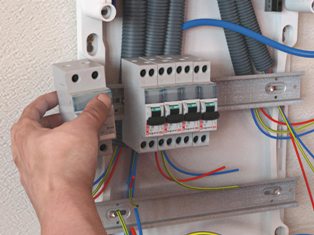Rules for electrical safety when servicing home wiring
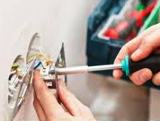 The electrical wiring of an apartment or house is a source of increased danger for people. Improper use of household electrical wires can lead to negative consequences, in particular to electric shock for people using electrical wires and household appliances connected to the network. Therefore, the question of electrical safety when servicing home wiring is relevant enough.
The electrical wiring of an apartment or house is a source of increased danger for people. Improper use of household electrical wires can lead to negative consequences, in particular to electric shock for people using electrical wires and household appliances connected to the network. Therefore, the question of electrical safety when servicing home wiring is relevant enough.
In this article, we will look at the basic rules that must be followed to ensure electrical safety when servicing home electrical wiring.
Technical status of home wiring
First of all, it should be noted that safe operation of electrical wiring is possible only in case of technical serviceability. If the wiring is in an unsatisfactory condition, then even if all the rules for its operation are followed, the operation of such wiring will be dangerous.
When it comes to the technical condition of the electrical wiring, then in this case it is necessary to take into account the condition of all the structural elements of the wiring.
First, it is the Main Distribution Board, where the input power cable from the electrical networks is connected, where the necessary protective devices are installed and all cable lines are connected and branched.
All protective devices must be technically sound and fully ensure their protective functions. Backup wiring protection must also be provided because one of the protective devices installed on a particular cable line may fail and fail to disconnect the damaged or abnormal cable section.
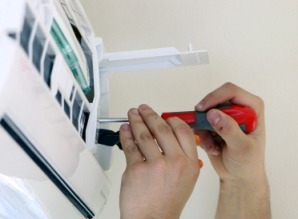
You should also pay attention to the quality of the contact connections of the wires in the distribution board, as well as in the distribution boxes installed around the house (apartment). Poor contact connections will damage the wiring.
The electrical wiring of the apartment, especially in rooms with high humidity, as well as where there is a high probability that the operating voltage will hit the housing, can only be triggered if there is residual current devices (RCD) or a combined device — difavtomat.
Safety in the operation of household electrical appliances
Particular attention should be paid to the safe operation of household electrical appliances. It is necessary to work with electrical appliances in accordance with the recommendations given in the instructions for their operation.
First, there are rules for connecting an electrical appliance to the electrical network — the load carrying capacity of the electrical wiring and the outlet in which the electrical appliance is included, as well as the presence of a working grounding of the electrical wiring (grounding contact of the outlet that has an electrical connection to the grounding bus of the electrical wiring of the house or apartment).
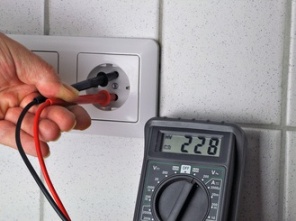
As mentioned above, one or another part of the electrical wiring, as well as the electrical wiring in general, must have reliable protection, since an electrical device can fail at any time and pose a danger to a person.
When connecting electrical appliances to the network, it is necessary to take into account the characteristics of the electrical circuit... Very often, a circuit breaker supplies a group of contacts, the setting of its operation is selected based on the carrying capacity of the main wire, from which the lines feeding the sockets of this group. That is, in this case, each of the outputs does not have adequate overload protection.
It often happens that the contact to which several electrical appliances are connected is damaged, which can lead to various negative consequences — arcs, fire. To avoid this, do not plug into the outlet a load that exceeds the rated value for that outlet.
In addition, you should pay attention to the quality of the contact connections of the contact with the cable line, the plug and the cable of the electrical appliance, as well as the quality of the connection of the plug itself. After operating the appliance for some time, remove the plug from the socket and check it for heating.
Heating of the plug connectors indicates a poor quality of the contact connection in the above places. If the contact connections are reliable, the heating of the plug indicates that the socket and/or plug of the electrical appliance does not match the actual load current.
If there are not enough outlets installed in the room or if they are far enough from the place of installation of the electrical appliance, extension cords are used. To minimize the potential danger that extension cords can pose, two basic rules must be followed.
First, you should only use technically sound and suitable extension cords. Second, they must be positioned in such a way as to exclude the possibility of damage to the wire and the penetration of moisture into the plug connectors.
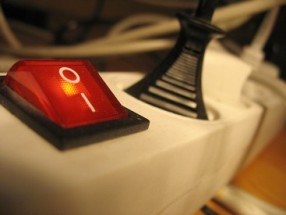
Electrical safety during operation of lighting devices
Lighting electrical appliances, as consumers of electrical energy, also bring safety. During operation, there is no direct human contact with the lighting fixtures (except for the replacement of burned-out lamps), due to which a false impression is created that the lighting fixtures do not pose a danger to people. But if you don't follow the simple rules of electrical safety, even lighting devices can be a source of electric shock. Consider a few rules that must be followed to ensure safety when using lighting fixtures.
First of all, it should be noted that lighting fixtures and light switches must be selected taking into account the characteristics of the environment where they will be installed.If it is a bathroom, then it is necessary to choose a lamp and switch that have sufficient protection against moisture and water splashes. In this case, the use of lighting fixtures and light switches that do not have sufficient protection against moisture leads to the risk of electric shock.
As for light switches that do not have protection against moisture, your hands must be dry when performing operations on them. Very often, in the process of homework, the light in the room is turned on with a wet hand. If moisture gets on the contact part of the switch, there is a high risk of electric shock.
Separately, safety rules should be taken into account when replacing burned-out lamps in a lighting fixture... The main rule is to turn off the lighting fixture. Normally, the light switch breaks the phase wire of the light. That is, in fact, to turn off the light fixture, it is enough to turn off the corresponding light switch. But there is also a possibility that a mistake was made when connecting the lighting, and the neutral wire went to the switch break, and the phase wire went to the light fixture.
If, for example, an incandescent lamp fails and you have to unscrew the base that is left in the cartridge, a person can be energized because the phase wire is not disconnected. Therefore, before changing the lamp or fixing minor malfunctions of the lighting fixture, you must make sure that there is no voltage on the lighting fixture (on the elements where voltage is possible and which can be touched).
If the light switch does not break the phase wire, then turn off the circuit breaker in the distribution board that feeds the lighting lines, or, if it is missing, turn off the power to the cables completely. The light switch connection error must be eliminated without fail.
Electrical safety when repairing electrical wires
In case of improper use of electrical wiring or in case of improper installation, selection of protective devices, damage to protective devices and for other reasons, damage to the elements of electrical wiring — contacts, switches, contact connections in the switchboard and in the distribution boxes and so called If you have the appropriate skills and experience in performing electrical work, the malfunctions that have arisen are eliminated independently, without the involvement of specialists.
Very often, due to lack of experience or carelessness, the rules of electrical safety are not followed, which leads to electric shock during repair work. Therefore, in order to avoid the occurrence of negative consequences, it is strongly recommended to involve qualified specialists in troubleshooting electrical wiring. If you still decide to fix the malfunction yourself, then you should pay special attention to the issue of electrical safety.
The main rule is complete disposal of the section of wiring on which repair work is planned... Before starting work directly, you must make sure that there is really no voltage using a special indicator and a voltage indicator.
Live work is carried out only in cases where there is no possibility to turn off the voltage of the section of the electrical network and only if there are working, tested electrical protection equipment: dielectric pad or electrical stand, tools with insulating handles, dielectric gloves. This work may only be performed by a qualified employee who has the appropriate electrical safety group and admission to the work done.
Extinguishing fires on electrical wires
In the event of a fire in the electrical wiring, it is necessary to remember that extinguishing the electrical wiring with water is prohibited until it is completely turned off. When powered, the electrical wiring can be extinguished with powder and carbon dioxide fire extinguishers, which are marked with "E" on the body or an inscription indicating that they can extinguish live electrical equipment with an indication of the voltage value and the minimum distance from which it is possible to extinguish the fire with this extinguisher. As a rule, this voltage is up to 1000 V, the distance is at least 1 m. Sand can also be used to extinguish live electrical wires.

